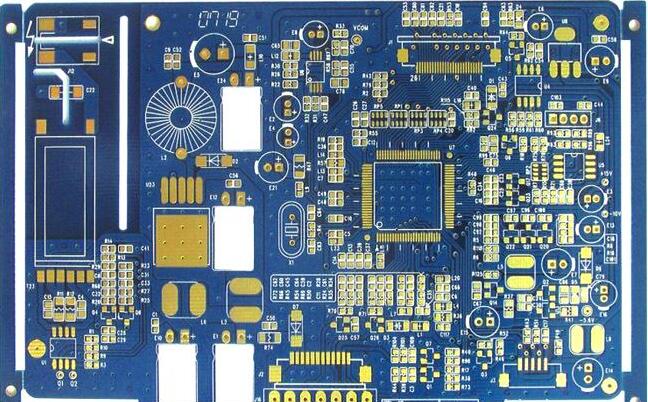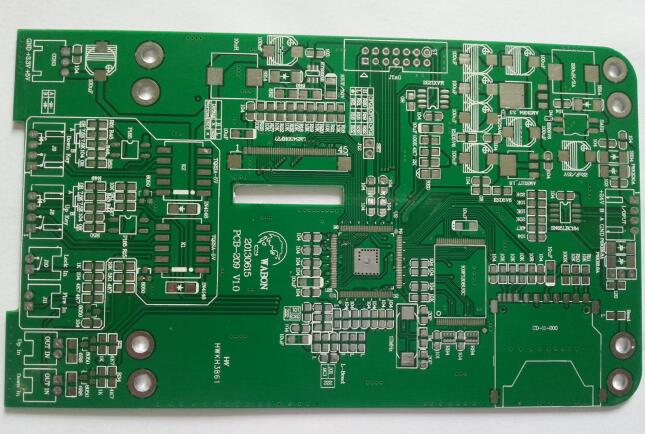PCB board via introduction
1. Vias are a part of printed circuit board (PCB) design. The function of vias is to electrically connect, fix and locate components. A via is composed of three parts: the hole, the pad area around the hole, and the POWER layer isolation area. The production of via holes: a layer of metal is plated on the cylindrical surface of the hole wall of the via hole to connect the copper foils of the middle layers. The upper and lower sides of the via hole are made into pads, and the lines are directly connected (or not connected).

2. Vias are generally divided into three categories: blind vias, buried vias and through holes. Blind holes-located on the top and bottom surfaces of the printed circuit board, have a certain depth (aperture and hole depth are in a certain ratio), and are used to connect the surface circuitand the inner circuit. Buried holes-connection holes in the inner layer of the PCB board (not visible on the surface of the PCB board). Through hole-through the entire PCB board, generally used for positioning and installation of components.
3. In general PCB design, because the parasitic capacitance and parasitic inductance of the via have little effect on it, the via design of the 1 to 4 layer PCB usually chooses 0.36mm (aperture)/0.61mm (pad) /1.02mm (POWER isolation area) via. For signal wires with special requirements, such as power wires, ground wires, etc., through holes of 0.41mm/0.81mm/1.32mm are generally used.
Reasons for unconnected vias on the PCB board
1. Defects caused by drilling
The board is made of epoxy resin and glass fiber. After drilling through the hole, there will be residual dust in the hole, which is not cleaned, and it cannot sink copper after curing. It will be tested in the flying probe test link.
2. Defects caused by heavy copper
The time for sinking the copper is too short, the hole copper is not full, and the hole copper is not full when the tin is melted, resulting in bad conditions.
(In chemical copper deposition, there is a problem in removing slag, alkaline degreasing, micro-etching, activation, acceleration, and copper deposition, such as incomplete development, over-etching, and the residual liquid in the hole is not washed clean. The specific link is specific analyze)
3, PCB board vias require excessive current
Did not inform in advance that the hole copper needs to be thickened, and the electric current is too large to melt the hole copper
4. Defects caused by SMT tin quality and technology
The residence time in the soldering furnace is too long during soldering, which causes the hole copper to melt and cause defects
Introduction of PCB board Teardrop
Teardrop patching is an operation that prevents damage to the copper film traces during mechanical drilling at the position where the copper film conductors meet the pads or vias, and deliberately widens the copper film conductors gradually. Since the shape of the widened copper film wire is very similar to teardrops, this operation is called teardropping.

Prevent the pads or vias from breaking at the connection with the copper film wire due to the pressure of the drilling when the mechanical board is made. Therefore, the copper film wire needs to be widened at the connection to prevent this from happening. In addition, the joint after the teardrop is filled will become smoother, and it is not easy to corrode the copper film wire due to the residual chemical agent.
The role of the PCB board to fill teardrops
1. Avoid the disconnection of the contact point between the wire and the pad or the wire and the via hole when the circuit board is impacted by a huge external force, which can also make the PCB circuit board look more beautiful.
2, when soldering, it can protect the pad and prevent the pad from falling off during multiple soldering.
3. During production, uneven etching and cracks caused by via deviation can be avoided.
4. Smooth the impedance during signal transmission, reduce the sharp jump of impedance, avoid reflection caused by the sudden decrease of line width during high-frequency signal transmission, and make the connection between the trace and the component pad tend to be smooth and transitional.